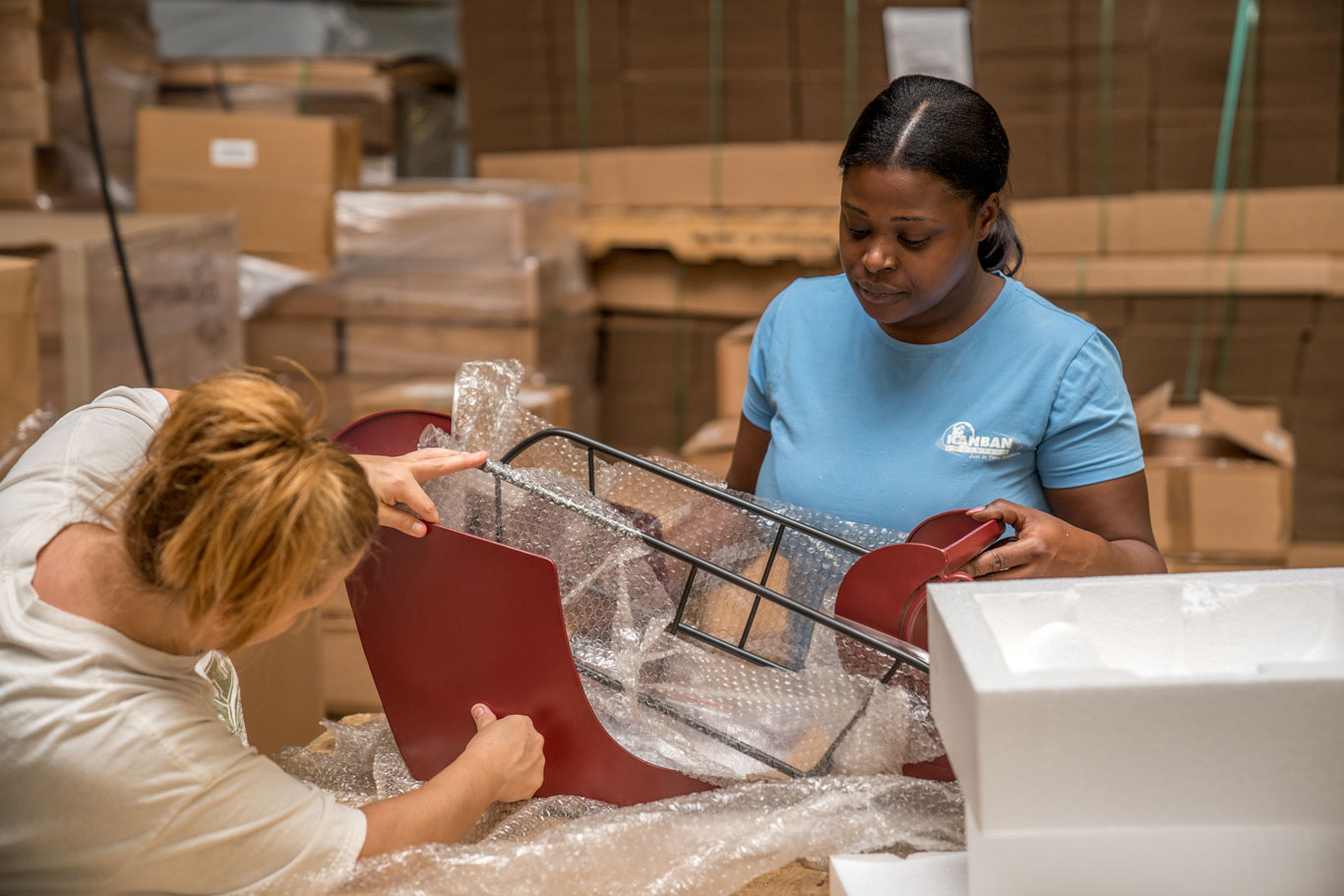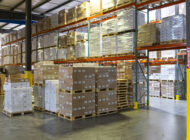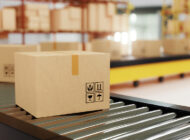In addition to standard warehousing operations, your third-party logistics (3PL) provider may be able to handle additional value-added services. With these services, your 3PL partner can perform – within the warehouse – many services that go beyond basic pick, pack and ship. In this article, we’ll identify and define the most common value-added warehousing services that a 3PL provider may perform.
Common and not-so-common examples of 3PL value-added warehousing
Cross docking
Cross docking is a service in which products are unloaded from a truck (or railcar if intermodal) for temporary storage in a 3PL warehouse. The products are then quickly loaded onto another truck for final delivery. Cross docking is a natural cost saver as products can be safely kept in a warehouse without incurring storage charges. By skipping long-term storage, companies can speed distribution by keeping products on the move.
The following are examples of instances in which cross docking can be especially useful.
- The driver is early to a retailer appointment. Most retailers will not accept early deliveries. So, when a driver with a trailer full of product arrives well before a scheduled appointment, he can unload the product at a nearby 3PL facility. The 3PL will then make the final delivery to the retailer, while the original driver moves on to his next load.
- The driver misses a retailer appointment. Just as drivers can be too early, they can also be too late, whether it’s due to traffic or equipment malfunctions. When this happens, the driver can unload product with a 3PL for cross docking and go on his way. The 3PL then performs final delivery at the new appointment time.
- The carrier is not a preferred logistics partner. Some retailers have ‘preferred’ logistics partners that enjoy privileges like the ability to drop trailers off at a DC without an appointment. To take advantage of this privilege, some carriers without preferred status will cross dock their products with a preferred 3PL, which then drops the trailer at the retailer’s DC.
- The trailer is loaded in reverse. Sometimes a trailer will be loaded in a way that conflicts with the driver’s schedule. With a visit to a cross docking facility, the 3PL can unload, organize, reload, and/or palletize product as the driver wishes.
- The load is not acceptable to the retailer. A driver may deliver a load to a retailer DC only to be turned away because the delivery is not up to retailer’s standards. In these instances, the driver can take the trailer to a 3PL cross docking facility to be reworked and to allow the 3PL to make the final delivery.
Product rework
 Rework most commonly refers to the reconfiguration of products to make them suitable for delivery to your end customers (e.g., retailers). 3PLs that specialize in rework can help you solve a host of problems, including the following.
Rework most commonly refers to the reconfiguration of products to make them suitable for delivery to your end customers (e.g., retailers). 3PLs that specialize in rework can help you solve a host of problems, including the following.
- Replacing a product component
- Inserting and/or replacing an instruction manual into product packaging
- Replacing incorrect or outdated product labeling
- Selling existing products in a new configuration
- Inserting missing parts into product packaging
- Repairing a defect
- Repackaging products (e.g., due to damaged boxes)
Foreign trade zone (FTZ) services
Some 3PL warehouses are authorized to function as foreign trade zones. Located in or near U.S. ports, foreign trade zones are secure areas that are under U.S. Customs and Border Protection (CBP) supervision, though considered outside of CBP territory. Merchandise may enter the U.S. via an FTZ without a formal customs entry, without payment of customs duties or excise taxes, and without a thorough examination.
It is only when the product leaves the FTZ for distribution within the U.S. that these duties, taxes and tariffs are collected. If the product is exported directly from the FTZ to another country, then nothing is collected.
Manufacturing logistics services
Following are some of the key inbound logistics services – also known as manufacturing logistics services – that 3PLs can perform to support the flow of goods into a factory.
- Third-party procurement. Your 3PL can procure boxes, nuts, bolts, and other consumable parts and materials, store and manage that inventory, and invoice you only for the parts you need, when you need them. This allows you to keep your cash longer, as you’re only invoiced when you use the parts.
- Kitting services. For many manufacturers, pre-assembly of component parts is also required during the production process. 3PL kitting services involve taking the individual parts of a product, compiling them together in a “kit,” and then delivering that kit to the production operation for assembly.
- Just in time (JIT) delivery. This is a lean manufacturing logistics strategy in which materials are kept off-site (e.g., at a 3PL warehouse) and delivered to the manufacturer precisely when they are needed (as determined by demand signals or a pre-determined schedule). These materials can be nuts, bolts, and packaging components, or they can be custom kits that are pre-assembled by a 3PL at a nearby location and delivered as needed.
- Vendor-managed inventory (VMI). With vendor-managed inventory (VMI), the supplier of the materials retains ownership of the inventory until it is delivered to the manufacturer. 3PLs routinely help to facilitate these arrangements – storing the materials on behalf of the supplier and then performing final delivery.
Rail transloading
Some 3PL warehouses are served by rail and, accordingly, have rail siding to handle incoming or outgoing freight directly between the warehouse and rail cars.
For example, Kanban’s distribution campus in Rocky Mount, North Carolina is served by CSX rail. We’re able to support incoming rail freight from the CSX railway in one of two ways:
- Boxcars can be brought up to one of our warehouse’s four rail doors. They can then be unloaded directly into the warehouse before heading back out.
- Center-beam cars are brought to our rail transload yard. Once in the yard, the products can be loaded onto flatbed trucks which can transport the product inside the warehouse via drive-through doors, or the trucks can head out straightaway and deliver the products to the destination.
Product sampling
Food logistics companies like Kanban that are registered with the FDA can enable FDA representatives to inspect your products at their warehouses. Some 3PLs are also able to provide product samples to your quality control team.
At Kanban Logistics, the way that sampling works is as follows. We have customers with nearby manufacturing plants that have trained our team members on their sample-collecting processes. When containers of these products come in and are unloaded, our team members collect the samples and deliver them to the nearby production facility. Their quality control team then tests to ensure that the product is fit for distribution. If it is, our distribution services will proceed as normal. If it’s not, we can quarantine and/or destroy (with certification) the product lots in question.
Lean on Kanban Logistics for Value-Added 3PL Warehousing
These value-added warehousing services allow 3PLs to tailor their offerings to the unique needs of your business, improve supply chain efficiency, and ultimately provide you with a competitive advantage in today’s complex business environment.
Located in the Mid-Atlantic region of the US East Coast, Kanban Logistics specializes in a wide range of 3PL services to support your traditional warehousing and distribution operations. Our capabilities include a full suite of inbound logistics services for manufacturers that can be performed from our Eastern North Carolina warehousing campuses. To learn more about how we can simplify and optimize your supply chain, contact Kanban today.



